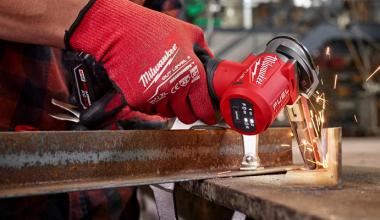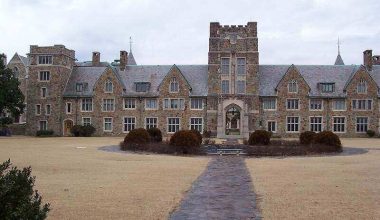Each secondary school starts and finishes at slightly different times. Although students may have longer or shorter school days, the length of the typical school day isn’t very different for each kid. So is there a standard answer to the question: What time do schools finish?
But why do these times vary? Let’s first consider the following questions, what happens during the school day?
How long are lunch/breaks? What extracurricular activities are offered at the secondary level? Things like revision sessions, clubs, support groups, and more rigidly timed lessons, often affect the finish time for schools.
This article aims to give you a comprehensive knowledge of what time schools start and finish in the UK.
Table of contents
- About UK Schools
- What Time Do Schools Start and Finish in the UK?
- What Age Do Students Start Attending Primary Schools in The UK?
- Why Do Elementary Schools Finish at 3:30 p.m.?
- What Time Do Schools Finish: Do Kids in Elementary School Receive Adequate Rest?
- What Other Activities are Available for Primary Schools Students after school hours?
- What Time do Schools Finish in Other Nations?
- What Uniforms Are Required in Primary Schools in The UK?
- School End Time Synonyms
- What Time Do Schools Finish on Friday
- How Long is a Typical Day in a Secondary School?
- How Long Does Schools in the UK Take for Lessons?
- Frequently Asked Questions On What Time Do Schools Finish
- Conclusion
- References
- Our Editor’s Recommended Posts
About UK Schools
The five phases of education in the UK are early years, primary, secondary, further education (FE), and higher education (HE). All children between the ages of 5 (or 4 in Northern Ireland) and 16 must attend school.
FE is not required and includes non-advanced courses that can be taken at HEIs and colleges for further (including tertiary) education.
The fifth stage, known as higher education (HE), is study above the GCE A levels and their equivalent, which full-time students in universities, other HEIs, and colleges complete.
What Time Do Schools Start and Finish in the UK?
Primary school, sometimes known as junior school, elementary school, or grade school, is the first year of obligatory early education for young children between the ages of four and thirteen.
It gives the next generation the fundamental knowledge and abilities needed to continue their education into high school while letting them discover their hobbies without feeling under pressure.
However, the start and end times of the primary school day impact the children’s sleep, social life, and even the lives of their parents.
These hours are quite important, whether the parent may have a rigid work schedule or one who just came to the UK and is unfamiliar with the schools.
Except on Friday, the school day begins between 08:00 and 08:85:00 and ends between 15:30 and 16:00. On Fridays, the school day ends a few hours earlier than usual, between 12:00 and 13:00.
During these hours, a healthy elementary school timetable is possible. Check the elementary school’s website to learn the precise start and end times.
Children can participate in after-school activities and early morning groups.
What Age Do Students Start Attending Primary Schools in The UK?
Students in the UK begin attending primary school around 4-5 years old. This is done to ensure that they start receiving an education early enough to develop foundational skills to ensure that they are old enough to handle the demanding timetable of school.
Switzerland, The Netherlands, Greece, and Australia are among the nations where children start school at a similar age to those in the UK.
However, there are regional differences in the age at which children can formally begin their schooling. In France and Hungary, children start school around the age of three.
In Canada, China, Egypt, Germany, India, Italy, Japan, Mexico, Norway, the United Arab Emirates, and China, children start school around the age of six. Around age 7, children in Finland, South Africa, Singapore, and Sweden start school.
See Also: What is the uniform policy at Sixth Form College?
Why Do Elementary Schools Finish at 3:30 p.m.?
An elementary school student can have the late afternoon and evening free because class ends at 15:30. Most young children can’t focus for more than a few hours at a time, even with breaks.
Additionally, it implies that they can create a schedule for after school. Maybe once or twice a week, the child will stay after school to socialize with friends while being watched over by parents or to participate in an activity of their choosing while being watched over by teachers.
What Time Do Schools Finish: Do Kids in Elementary School Receive Adequate Rest?
Primary school children need between 10 and 12 hours of sleep each night to stay healthy and have enough energy for the day.
Generally speaking, waking up at about 8:00 in the morning is appropriate because school starts at around 8:40.
This indicates that for kids to get their recommended 11 hours of sleep, bedtime should be around 21:00. It is crucial to create a strict bedtime and evening schedule.
This is crucial for the child’s mental and physical health and their development into a responsible, well-organized adolescent and adult.
Children may have the following effects if they don’t get enough sleep:
- Unable to develop healthily
- Being unable to focus and pay attention in class
- Unable to retain what they have learned
- Being unable to maintain a stable state, resulting in either hyperactivity or inactivity
- An immune system that isn’t strong enough to prevent illnesses
- Developing emotional instability could result in improper actions
- Short attention span.
What Other Activities are Available for Primary Schools Students after school hours?
Sometimes parents are either unavailable to pick up their children after the school day or occupied when it begins.
Children can join breakfast and homework clubs in the morning. These typically give the kids limited options for the first and most crucial meal of the day.
Different cereals with milk and toastable bread with butter, jam, and other available spreads are popular choices.
They can decide whether to eat with the others who arrive earlier or by themselves if they need some quiet time in the mornings.
There are typically many different activities available in the afternoon for kids to participate in and try out, with after-school clubs being one of them.
The kids who participate in these clubs also benefit since it gives them the chance to discover new talents and interests while promoting positive interactions with others and routines.
They’ll get a good break from studying as a result. Sports teams, clubs for chess and other board games, and arts and crafts are a few examples of frequent activities.
What Time do Schools Finish in Other Nations?
The average school day lasts between six and seven hours in most nations. This from before 9:00 till 15:30 in the UK. Internationally, this time differs, though.
In some French schools, the school day lasts from 8:30 to 16:00, although students have a two-hour lunch break before returning to class.
With a two-hour lunch break from 13:00 until 15:00, the school day in Spain runs from 09:00 until 17:00.
Brazil has three school periods: from 7:00 to 12:00, from 12:00 to 17:00, and from 17:00 to 22:00. However, students are only required to attend one period every day.
In India, schools may start at 7:30, and finish at 14:00 or 8:40, and finish at 16:30, with a lunch break from 13:00 to 15:00.
Read More: What are Comprehensive And Foundation Schools? How Does It Work?
In Japan, the school day lasts from roughly 8:30 to 16:00, but students also typically attend cram school for around three hours in the evening.
Compared to most other nations, South Korea has substantially longer school days. Children often arrive at school at 8:00, start studying, and keep going until noon, when they take a one-hour lunch break.
Following that, they attend school from 13:00 to 4:30, after which they go home for dinner. However, they must return to school or tutoring sessions in the evening until around.
What Uniforms Are Required in Primary Schools in The UK?
Another way that early British education varies from other countries is the requirement of school uniforms.
Almost all UK primary school students wear a uniform shared by the school.
While the other items of clothing may give more options, there are often one or a few pieces of schools with specific uniforms that are required.
Students have a wide selection to choose from, including polo shirts, cardigans, dresses, skirts, shorts, and many other items.
Independent schools are an exception to this flexible uniform policy because they typically have more stringent dress codes and offer fewer options due to their use of unique blazers, ties, and skirts.
But in many other nations, wearing a uniform is not seen as crucial, thus students can dress more casually for school.
School End Time Synonyms
Substitutes for finishing school (noun school, particularly for higher education)
- College board.
- Institute.
- Preparatory education.
- Secondary education.
- Seminary.
- Brainery.
- The Ivy Halls.
- Military academy.
What Time Do Schools Finish on Friday
Half a day for kindergarten, which is from 8 to 12.
Grades 1 through 12 begin at age 8 and finish at age 3. At 4:30 or so, the late bus arrived for after-school activities.
There weren’t beginning and ending times in college. Even though it occasionally ran late, some people their first lesson began at 8 a.m. and finished at 11.
How Long is a Typical Day in a Secondary School?
In secondary schools, there are 7 or 8 periods; however, this varies per school. A school day consists of 3 to 9 periods.
Your timetabled lessons are more varied throughout your first two years of secondary school and even the first three years (depending on when you start your GCSEs), and then they become less varied after you begin your GCSEs.
In most schools, assemblies are held once a week and are often conducted by heads of years or senior staff members. They run around half an hour.
For children who grow spiritually and religiously, regular prayers and other activities may be part of the school day at some schools with a religious foundation.
This is done by having prayer sessions before or after school, during which specific religious practices are discussed and practiced.
Read Also: How Many Weeks & Terms Are in a School Year in the UK?
Even at GCSE, you can choose the other subjects you wish to take, but there are still required courses like science, math, English, a foreign language, and a humanities subject.
This includes sociology, psychology, design technology, drama, music, and other creative fields. However, as schools tend to restrict the number of GCSE subjects you take, you will have to give up some subjects.
Unless a school day is shortened and you have been informed that the break/lunch will no longer take place, all school days include a break and lunch to break up the lesson sessions.
Time schools finish includes two 2-hour periods before and after your break and lunch in most schools.
After these hours, you might have a club meeting or a revision support session, which would extend your time in class by about half an hour.
These are only optional if you demonstrate that you can work well and don’t require further school participation.
How Long Does Schools in the UK Take for Lessons?
Also, timetables are handled differently by each school, therefore, the timing will vary around the UK. Nevertheless, single-period classes often last an hour, with double-period lasting an average of two hours.
The time schools finish in the UK differs. Younger students in secondary school are less likely to have two hours of the same topic because students tend to have more double periods as they age.
How Long are the Break Periods?
Depending on the institution you attend. The Time schools finish and breaks typically last 20 to 30 minutes.
The school library and the playground are often open to children without restriction.
What Time Do School Lunches Last?
Although this length varies, lunches often last 30 to 40 minutes. Break time usually corresponds to the time allotted to the kids for lunch.
Lunchtimes and breaks have often been in schools as a result of COVID. Students have had access to the library, the yard, the computer labs, and other areas during lunch and more typical hours.
Read Also: Are UK Private Schools Worth it? 2024 Student’s Guide
Which Clubs are Available in Secondary Schools?
Activities at secondary school are more diverse than those at primary school, especially in comparison. The three categories of clubs that are most common are sports, the creative arts, and higher education.
Therefore, basketball, netball, football, drama, art, reading, computer science, and other extracurricular activities are generally available in secondary schools.
Schools frequently give students the chance to suggest clubs they are interested in, and if there is enough interest, teachers will start new clubs.
For instance, anime clubs have grown in popularity, they now exist in certain secondary schools.
Frequently Asked Questions On What Time Do Schools Finish
Because secondary schools have different schedules, it’s difficult to pinpoint a precise duration; however, a typical school day lasts between 5 and 6 hours. It begins at 8 or 9 a.m. and ends at 3 or 4 p.m.
In the United States, a normal high school day runs from Monday through Friday from roughly 7:30 a.m. to 3:00 p.m. During the school week, extracurricular activities are arranged in the afternoons and early evenings; however, some extracurricular events may be on weekends.
British elementary school start and end times
The basic UK school system has the same official set hours throughout the academic year, with start times ranging from 08.45 to 09.00 and finishes between 15 and 15.30.
Secondary education
The first thing to know is that, except in Scotland, high school is referred to as secondary school in most of the UK. Unlike in American high schools, students attend secondary school from age 11 to 16.
Conclusion
School hours in the UK offer flexibility within a framework. While the average school day starts around 8:00-9:00 AM and finishes around 3:00-4:00 PM, individual schools may have slight variations.
Ultimately, the focus is on ensuring students receive the required learning hours (around 5-6 per day) in a way that best suits their needs and the school’s environment. It’s always best to check with a specific school for their exact timings.
References
- thinkstudent.co.uk – What Time Do Schools Start and Finish in the UK?
- quora.com – What time does your school start and finish?



